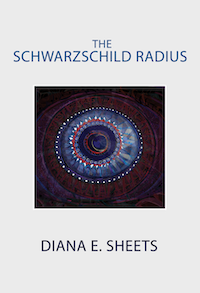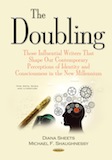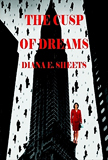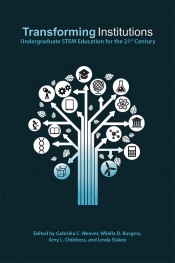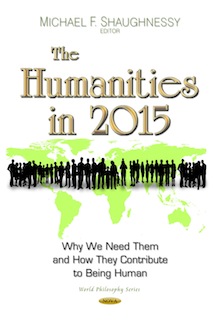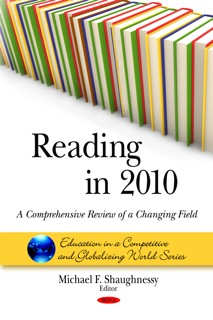Watchmen, Superhero Comics, and the Loss of Consciousness
Copyright © 2009 by Diana E. Sheets
You have been living on Pluto, once characterized as the ninth planet in our solar system, now known to be one of 70,000 equivalent ice clusters measuring 100 kilometers across that is encapsulated within the Kuiper Belt (http://www.universetoday.com/2008/04/10/why-pluto-is-no-longer-a-planet). You may, therefore, be forgiven for not realizing that on planet Earth in the new millennium—that abomination referred to as the twenty-first century—the novel has been eclipsed by the comic book—graphic novel, confessional illustrated memoir, manga, gekiga, whatever—those “juxtaposed pictorial and other images in deliberate sequence, intended to convey information and/or to produce an aesthetic response in the viewer” (Scott McCloud, Understanding Comics: The Invisible Art, HarperPerennial, 1994, 9).
In keeping with Literary Gulag’s commitment to examining the social ramifications of our cultural decline as manifest in literature, this essay will provide a brief history of superhero comics before examining why Watchmen has been erroneously celebrated as one of the greatest “novels” of the twentieth century and what this wrong-headed analysis portends for the future of our civilization. Given that the comic book is displacing the novel today, aided and abetted by film adaptations of these stories that entice millions of viewers, Watchmen deserves our scrutiny.
“Yellow Kid” was the first serialized comic strip featured in an American newspaper. It was written and drawn by Richard Outcault and appeared in William Randolph Hearst’s New York Journal in 1896. Its protagonist was an uncouth, tough child from the slums, an “idiot savant” that appealed to immigrants in
Nearly forty years later the comic book industry was born (1933-41), conceived in the years immediately preceding and leading up to America’s participation in World War II. From its inception it was dominated by superheroes, none more so than Superman, the first superhero (Bradford W. Wright, Comic Book Nation: The Transformation of Youth Culture in America, The John Hopkins University Press, 2001, 1, 7-18). That comic book character was the invention of two high-school students, Jerry Siegel and Joe Shuster, the children of Jewish immigrants. Superman was conceived in 1934 as a comic strip. But it was not until a number of the strips were pasted together into a thirteen-page comic narrative that Superman was published. It became the feature story for the first issue of Action Comics, owned by DC Comics, in June of 1938 with Superman prominently displayed on the front cover. The following year the comic book series Superman was created, the first of the titles devoted to a single superhero (1, 7-9). Superman became the iconic superhero for prepubescent and adolescent Caucasian boys struggling to become men and desiring to be free of parental constraints as they fantasized about flexing their muscles and demonstrating their extraordinary powers in the pursuit of justice while not so coincidentally winning the hearts of girls and women and, indeed, the approbation of
The Golden Age of Superheroes (1938-1940’s) began in the years immediately preceding America’s decision to join with the Allied Forces against the Axis Powers (Richard Reynolds, Super Heroes: A Modern Mythology, University Press of Mississippi, 1992, 8). Batman was introduced by DC Comics in 1940. Marvel Comics countered with Captain America in March of 1941. In December that same year, Wonder Woman was introduced in a story published in All Star Comics. In 1944 Wonder Woman became one of the big three title series—Superman, Batman, Wonder Woman—offered by DC Comics (http://en.wikipedia.org/wiki/Wonder_Woman).
The superhero comics were patriotic. Captain America fought the Axis Powers months before
By 1952 nearly 650 different comic titles were published monthly by over twenty different publishers, but the content had shifted from superheroes to horror and crime. Against the backdrop of the cold-war retrenchment, psychiatrist Fredric Wertham published Seduction of the Innocent (1954), which decried the adult depravity of the “crime comics” and led to his dramatic televised testimony that same year before the Senate Subcommittee on Juvenile Delinquency. Despite his alarmist tactics, Wertham gained the support of many intellectuals including the renowned sociologist C. Wright Mills and
The Silver Age of Superheroes began, Richard Reynolds suggests, with the revival of Flash in 1956 and ended in 1986, Geoff Klock contends, with “the birth of self-consciousness.” The transformation from comic book entertainment to literary narrative became manifest for Klock as the “building density of tradition becomes anxiety” (Reynolds, 9; Geoff Klock, How to Read Superhero Comics and Why, Continuum, 2002, 3). This is evident, he argues, in Frank Miller’s The Dark Knight Returns (1986) and writer Alan Moore and artist Dave Gibbons’s Watchmen (1986-7).
Indeed, of all the superhero comics, none is more celebrated than Watchmen. In 2005 Time included it in its top one hundred ranking of “best English-language novels from 1923 to the present" (http://www.time.com/time/2005/100books/the_complete_list.html). Watchmen was the only comic book series awarded the Sci-Fi industry’s prestigious Hugo Award in 1988 (http://www.thehugoawards.org/?page_id=32). Entertainment Weekly listed Watchmen in 2008 as thirteenth in its grouping of the best fifty novels of the last twenty-five years. Its praise was stellar: “The greatest superhero story ever told and proof that comics are capable of smart, emotionally resonant narratives worthy of the label literature” (Jennifer Reese, Jeff Jensen, Tina Jordan, Kate Ward, “The 100 Best Books of the Last 25 Years,” Entertainment Weekly, June 27, 2008/July 4, 2008, Issue 999/1000, 95-107).
Why has Watchmen been celebrated as literature? Before answering that question, let us consider the plot. In keeping with many Sci-Fi Novels, it presents an alternative history.
The superheroes in Watchmen are represented by two generations, the Minutemen, who reigned in the Golden Age, and the protagonists of the story, the Watchmen. The later ruled during the Silver Age before being forcibly retired as “freelance” superheroes in 1977. Doctor Manhattan and the Comedian, one of the former Minutemen, continue as superheroes sponsored by the government. Only Rorschach, a self-proclaimed vigilante, operates in violation of the law (See the summary analysis provided by Wikipedia, http://en.wikipedia.org/wiki/Watchmen).
Nominally the story is about the murder of the Comedian and Rorschach’s efforts to persuade his fellow Watchmen to solve the murder and, by inference, reclaim their mandate as superheroes empowered to solve crimes, pursue justice, and discover the truth. Meanwhile, the minute hand of the Doomsday Clock moves ever closer to
The final scene in Watchmen is in
In addition to commentary about the narrative at the end of every chapter except the concluding one, there is another story. It is a fictive pirate tale, a comic-within-the-comic, “Tales of the Black Freighter,” read by an unnamed and incidental African-American character that is perhaps emblematic of the marginalized role of Black Americans as “readers,” characters, and writers of superhero comics until at least until the 1980’s.
۞
How does Watchmen attempt to transform a superhero story that traditionally appeals to adolescent boys by reinventing it as an adult comic that men will celebrate as literature? Answer: it ages the characters and advances the plot to reflect nominally adult content while superimposing postmodern literary techniques on a comic-book narrative. The result is that “readers” interpret Watchmen not only as a genre-busting superhero tale rich in literary references but also as an archetypal story emblematic of the superhero genre. Thus, the adult characters in Watchmen, instead of harboring adolescent fantasies, exhibit the anxieties common to many middle-age adults. Only Doctor Manhattan has superpowers, and yet he is, effectively, unable to exercise them. Rorschach is the only superhero operating outside the bounds of the law, a vigilante nominally in the tradition of Superman. However, Rorschach is ruthless and amoral, a social pariah more akin to the traditional enemies of superheroes than their ilk. Nevertheless, he becomes the hero of the story and, not so coincidentally, ends up dead. Retired as superhero Ozymandias, Veidt is of all the Watchmen the most powerful, the most cunning, the most willing to sacrifice anyone to achieve his end goal. Yet this “villain,” responsible for murdering millions, is the one individual trying to ensure the survival of humans on Earth.
The Watchmen characters resemble not only characters from Charlton Comics from which they were originally conceived but also are emblematic of other superheroes. Thus, Rorschach resembles the Charlton character “the Question” and bares a strong resemblance to Batman (Reynolds, 32; Iain Thomson, “Deconstructing the Hero,” Comics as Philosophy, Edited by Jeff McLaughlin, University Press of Mississippi, 2005, 106-7). These parallels, which can be found with all the characters, cause the “reader” to become acutely conscious of the story and its associations within the larger genre of superheroes. This hyperawareness is further accentuated when, at the end of Chapters 1-11, the “reader” discovers textual commentary about the narrative. It also occurs as the “reader” encounters the comic book story-within-the-story, “Tales of the Black Freighter.” The psychological profiles of the characters—in film parlance their “back stories”—alternate with the narrative driving the story forward. Moore and Gibbons insert contemporary realism—nuclear Armageddon, the conflict between superpowers, the alternative history of American politics, and the gritty realism of 1980’s
However, for all its literary pretensions and feigned complexity encapsulated in anxiety-saturated self-consciousness, Watchmen is firmly bound within the conventions of the superhero comic book as Reynolds demonstrates when he provides an archetypal framework based loosely on Superman that, he suggest, applies universally to superhero narratives (12-16). Superheroes are characteristically male. They stand apart from society. They have no adult relationship with their parents—in the case of Watchmen only the female superheroine, Silk Spectre, deviates from this rule. Typically superheroes are god-like. Others are more ordinary. However, they all are capable of communicating with each other. They are motivated by the pursuit of justice. The superhero’s mythical story—in this case Doctor
The extent to which Watchmen inhabits the conventional limitations of its genre become evident in its treatment of gender issues. As Douglas Wolk noted, superheroes reside in a masculine domain.
The world of comic book readers is an insular world, and it’s also an annoyingly male world. . . . For a few decades, mainstream comics were so overwhelmingly male-dominated that the industry had not the faintest idea of how to connect with potential women customers. I remember seeing a Marvel sales plan, sometime in the early ‘90s-a huge document, several hundred pages long; near the back, a little section labeled “Female Readers” listed the two titles Marvel published for half of their potential audience: Barbie and Barbie Fashion. (Reading Comics: How Graphic Novels Work and What They Mean, Da Capo Press, 2007, 70)
Despite Watchmen’s inclusion of two female superheroines, Sally Jupiter/Silk Spectre (the mother) and Laurie Juspeczyk/Silk Spectre (her daughter), these characters are superheroines in name only. Their behavior is shaped by the conventions of their era. Each seeks male approbation. Both are defined more by the actions of the male superheroes with whom they associate than with respect to their own motivations as superheroines. Rape, sex, the relationship between men and women—these all enter into the superhero narrative by virtue of the role the two women have with their male cohorts. Neither Silk Spectre compares with Wonder Woman or, in contemporary television/comic parlance, Xena, the “warrior princess.” Thus, the superheroines facilitate the actions of the male counterparts while divesting themselves of actual power.
Watchmen is similarly bound by the conventions of the superhero genre when addressing issues pertaining to race. Until recently, superheroes have been Caucasian men and/or boys on the cusp of adulthood. One of the pioneering approaches was the underground comix Trashman: Agent of the Sixth International written and drawn by
In 2003 the racial boundaries of the superhero narrative were reconceived when Marvel Enterprises introduced a miniseries that reframed the Captain
Truth: Red, White, and Black reinvents the foundational tale of Captain America to suggest this patriotic superhero was a Black American soldier, part of a group of African-Americans who were selected as experimental subjects in a governmental effort to develop a Super Soldier Serum during the Second World War. As the only survivor, Isaiah Bradley became Black Captain
Not surprisingly, Truth: Red, White, and Black received mixed reviews, celebrated by many mainstream and/or ethnic supporters who relished the reinvention and challenge to the traditional Captain America story while vociferously criticized by many loyal Captain America fans who felt the “back story” subverted and violated their superhero’s narrative (46, 50, 58-59, 61-2).
In the case of Watchmen, as with almost the entire superhero genre, the superheroes are all Caucasian. Alan Moore and Dave Gibbons, to their credit, have included African-American characters, notably Malcolm Long, the prison psychologist who interviews Rorschach, as well as Long’s wife, Gloria, and the unnamed African-American “reader” of the pirate “Tales of the Black Freighter.” Nevertheless, these characters are incidental to the story. Indeed, an argument could be made that given the feminization and political correctness of literary fiction (http://www.literarygulag.com/blog/show/6; http://www.literarygulag.com/blog/show/5), the domain to which Caucasian men have retreated and want preserved—with all its atavistic features retained in perpetuity—is the sacrosanct world of superhero comics where men are men, women are subject to objectification, and ethnic minorities need not apply.
۞
Watchmen is self-consciously immersed in superhero nostalgia while simultaneously engaged in deconstructing the superhero mythology. It manages to both heed the well-defined parameters of its genre while, nonetheless, challenging some of its boundaries. As a comic book, Watchmen succeeds in expropriating literary and linguistic devices to redefine the scope of the superhero comic. For this, Watchmen deserves our appreciation. However, applying literary methodologies to a comic does not transform it into a great work of literature. As Douglas Wolk is at pains to explain, comic books are a distinctive medium and as such are neither “graphic novels” nor part of a “comic book genre” that can be categorized as fiction.
As cartoonists and their longtime admirers are getting a little tired of explaining, comics are not a [literary] genre; they’re a medium. Westerns, Regency romances, film noir: those are genres—kinds of stories with specific categories of subjects and conventions for their content and presentation. (Stories about the superheroes are a genre, too.) Prose fiction, sculpture, video: those, like comics, are media—forms of expression that have few or no rules regarding their content other than the very broad ones imposed on them by their form. (11)
Or as Thierry Groensteen suggests comics are “stories in images,” a “predominantly visual narrative form.” It is a medium in which “narration passes first and principally . . . by way of the images” rendering an “image-based story” (The System of Comics, Translated by Bart Beaty and Nick Nguyen, University Press of Mississippi, 1999, 11-2). Proponents of this distinctive medium are often at pains to stress its distinguishing features. They note that the panels are fragments of the narrative with the “holes” or spaces between them constituting the “gutter” through which the “reader” must conceptualize the elliptic narrative, thereby transforming stilled frames into a metonymically representative world (10-11, 60).
However, Literary Gulag is at pains to emphasize the limitations of this visually-driven medium. It is, by its very nature, a graphically-driven domain augmented by flecks of text. Therein lies its limitation. The images from the panels dictate to the “reader” the content that he or she will supply from the “gutter” to fill in the “holes” between the panels. Consequently, the “reader” does not have to create a fully conceptualized realm based only on abstract language. In the world of comics the story image and textual content have already been supplied and, by inference, specified for your imagination. All that is required is envisioning the missing panels that would give the stilled images the dynamic motion characteristic of cinema. Sophisticated language that involves abstraction and deduction and necessitates building a conceptual framework layer by layer so that the reader may engage in complex and integrated thought cannot be achieved through comic book “jump cuts.” Instead, the comic book “reader” must bring these ideas from other written sources and then insert them into the void supplied by comic narrative. Consequently, without sustained and systematic knowledge obtained from “close readings” of written texts, a “reader” is limited in his or her ability to supply a sophisticated interpretation to this visual medium. That is to say that the rich inferences that we bring to bear in engaging with “sophisticated” comics are derived from our textually-driven sources. If, as a culture, we no longer read scholarly works, then, we will no longer possess the ability to invest complex meaning to comic-book narratives. Absent a complex linguistic heritage founded on written sources that are integral to our culture, we are at risk of devolving back to a preconscious state of orality exhibited in primitive cultures where we believe that our own internal thoughts, which we “hear” as voices, are nothing less than the commands of God (Julian Jayne’s, The Origins of Consciousness in the Breakdown of the Bicameral Mind, Houghton Mifflin Company, 1982, Book I, Chapter 3-4, 67-99).
The failure of Watchmen is particularly evident when it is held up to the highest standards of history or the novel of ideas. How can the symbolic references possibly be understood without substantial and sustained reading and then bringing this knowledge to bear on the comic narrative? Take, for example, the character Doctor Manhattan. To understand the symbolism and implications associated with that name one must read about the Manhattan Project, which developed the atom bomb. One must read about how the atom bombs were deployed in
Not convinced of the importance of “scholarly” reading in enhancing your understanding and appreciation of Watchmen? Consider another of its key symbols—the Doomsday Clock—which is featured at the beginning of every chapter. This symbolic clock face was created by board members of the Bulletin of the Atomic Scientists in 1947 in the aftermath of the bombing of
In order to understand the magnitude of our global instability, one must read The Limits to Growth issued by the Club of Rome in 1972 and its 2004 update (Signet, 1972; Limits to Growth: The 30-Year Update, Chelsea Green, 2004). The initial report provided a computer model that forecast a number of social catastrophes likely to ensue as a consequence of exponential population growth: fuel and water shortages, famine outbreaks, as well as pollution and a depletion of other natural resources. It estimated a population crash possibly as early as 2030 and no later than 2100. The 2004 analysis was based on an updated computer projection, although its prognosis remained essentially unaltered with respect to the original report.
Then, there is the nihilism coursing through the bloody pages of Watchmen. It is the outgrowth of postmodern sensibility that rejects the Enlightenment belief in rational progress in favor of a relativistic outlook that eschews morality and righteous values. To understand the driving mechanism behind this anomie that becomes manifest in a society on the brink of collapse requires a readerly understanding of Western thought from the sixteenth century through the 1980’s with an emphasis on late nineteenth and twentieth century history coupled with the philosophy ideas of Kierkegaard, Nietzsche, and Heidegger, as well as contemporary postmodernism. Without an analytic appreciation of these influences, the nihilism of Watchmen is quickly reduced to an inchoate mood characterized as indifference or anxiety bordering on despair.
Apart from the learning required to obtain historical and philosophical understanding and the scientific knowledge necessary to comprehend the factors driving world-wide instabilities and placing human life on Earth at risk of global annihilation, Literary Gulag wants to stress the utter absurdity of gaining wisdom from a comic book. Publish as many comics as you like. Insist on calling them literary. Festoon the writers and artists with prizes. Rank them amongst the greatest novels ever written. Make them into block-buster films. Celebrate their brilliance. The fact remains the comic book was, is, and always shall be a juvenile medium that is designed to entertain. It is image based. The language used in comic books is rudimentary. It was, is, and always will be intended for an audience struggling with literacy. It can provide no nuanced understanding except what a literate reader brings to bear from sophisticated written sources. The comic book offers no ethical guidance, despite the claims of its aficionados. The absurdity of addressing profound moral issues—Truth, Justice, Good versus Evil, the nature of Tyranny, the question of how we as a civilization intellectually and ethically respond to nihilism within the scope of postmodern literary theory—within a comic book saturated with images and little else is, in the end, beyond retort. It is the absurd claim of a civilization poised on the cusp of unconsciousness.
In a world where there is no longer a unifying set of values, where authority is castigated, where learning is a lost art, where reading books has been likened to solitary confinement, where aspirational goals requiring years of hard work in America have been displaced by a “culture of complaint” (See Robert Hughes’s book by that same title, Oxford University Press, 1993)—that perpetual whine of victimhood—rest assured that the comic book with its sisterhood of visually enhanced mediums now reign supreme. But never delude yourself into mistaking a comic book for a novel or a nonfictional story or even a memoir. Be truthful: these are for our amusement and nothing more. In our embrace of this “culture” we stumble backward in time, resembling our immigrant forefathers or, in George Gissing’s memorable words, the “quarter-educated,” those “young men and women who can just read, but are incapable of sustained attention” (from his novel New Grub Street published in 1891, Chapter XXXIII, 6, http://ebooks.adelaide.edu.au/g/gissing/george/g53ne/chapter33.html). And ask yourself, in a moment of rare candor, if perhaps Fredric Wertham’s book Seduction of the Innocent, despite its hyperbole and erroneous scientific claims, is, nonetheless, more astute in its assessment of the danger derived from comic books than David Hajdu would have us believe (The Ten-¢ent Plague, 6-7, 229-44, 263-5, 229-30. See Bart Beaty’s revisionist assessment of Fredric Wertham, Fred Wertham and the Critique of Mass Culture, University Press of Mississippi, 2005, a brief summary of which is included in Louis Menand’s review of The Ten-¢ent Plague, “The Horror: Congress investigates the comics,” The New Yorker, March 31, 2008, 124-8).
So inhabitants of Pluto, take note. The comic book phenomenon on Earth is here to stay. If you have access to great literature, do not bother transporting yourself down to Earth. Here reading—that solitary activity that fosters contemplation—has become a lost art. Here, we press our nose to the comic book or use joysticks or text keys to play electronic games or enter interactive communities on the Internet or “tweet” our inane text—anything, everything that eliminates consciousness about who we are and what we are becoming. Rest assured, residents of Pluto, you have not missed much. Only the decline of Earth’s civilization as we know it.


